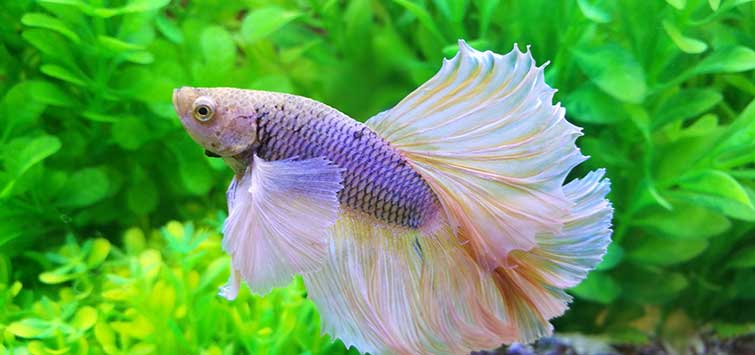Betta Fish Treatment: Necessary Tips for a Healthy And Balanced and Satisfied Pet Dog
Betta Fish Treatment: Necessary Tips for a Healthy And Balanced and Satisfied Pet Dog
Blog Article
Everything About Betta Fish: Understanding Their Distinct Needs, Actions, and the most effective Practices for Optimum Treatment
Comprehending the distinct needs and actions of Betta fish is necessary for any type of aquarist looking to offer optimal care. betta fish. As we discover these aspects even more, the effects for both amateur and skilled fish keepers become significantly apparent, elevating inquiries regarding just how best to fit these amazing fish in our homes.
Betta Fish Review
Although commonly appreciated for their vivid colors and moving fins, Betta fish, scientifically known as Betta splendens, are complex animals that require certain like prosper. Stemming from Southeast Asia, these freshwater fish are understood for their territorial nature and special behaviors. Betta fish exhibit sexual dimorphism, with males showing much more vibrant colors and longer fins than females.
Their aggressive tendencies, specifically among males, necessitate cautious factor to consider when real estate them. Bettas are commonly maintained in single-specimen storage tanks to avoid territorial disagreements. They can coexist peacefully with certain suitable types in bigger area tanks, provided the atmosphere meets their needs.

To make certain optimal treatment, aquarists need to comprehend their distinct behavior traits, dietary demands, and habitat requirements. betta fish. With correct attention, Betta fish can exhibit their dynamic individualities and flourish in a properly maintained fish tank setting
All-natural Habitat and Setting
Betta fish grow in a varied variety of all-natural environments, primarily located in the superficial waters of Southeast Asia, consisting of rice paddies, swamps, and slow-moving streams. These atmospheres are defined by warm temperature levels, normally between 75 ° F and 82 ° F(24 ° C and 28 ° C ), and a pH level varying from 6.5 to 7.5, which is perfect for their health and health.
In their natural environments, Betta fish are accustomed to dense plants, offering both shelter and breeding grounds. The visibility of plants such as drifting water lilies and thick lawns not just provides defense from killers however also adds to the oxygenation of the water, which is necessary for their respiratory system needs. Furthermore, these atmospheres often have locations of still water, permitting Betta fish to exhibit their all-natural actions such as bubble nesting.
Understanding the natural habitat of Betta fish is essential for fish tank fanatics. Duplicating these problems-- via water temperature, pH equilibrium, and the incorporation of live plants-- can dramatically boost the general health and wellness and long life of these captivating fish, guaranteeing they prosper in a home fish tank setting.
Social Habits and Communications
Recognizing the social behavior and interactions of Betta fish is important for effective aquarium administration. Betta fish, or Siamese battling fish, are understood for their unique behavioral qualities, defined mostly by territoriality and aggression. Men, specifically, show highly hostile habits towards one another, bring about the well-known online reputation of Betta fish as competitors. In a confined room, two men can involve in violent conflicts, commonly resulting in injury or death.
Conversely, female Bettas display much less aggressive behavior and can browse around here coexist in groups, recognized as sororities, if introduced appropriately. Nonetheless, it is critical to check their interactions very closely, as hierarchy and dominance can result in conflicts. Recognizing the dynamics within a Betta neighborhood is important; establishing hiding spots and making sure enough area can mitigate hostility.
Additionally, Betta fish might additionally show interest and social actions in the direction of various other species. While they can exist together with specific non-aggressive storage tank friends, it is necessary to select compatible varieties to avoid stress and aggression. On the whole, identifying these social interactions is essential to cultivating an unified fish tank environment for Betta fish.
Necessary Treatment Standards
Giving proper care for Betta fish is critical to their health and wellness and well-being. Regular water adjustments-- around 25% once a week-- assistance preserve water top quality.
Betta fish call for an appropriate tank dimension; a minimum of 5 gallons is advised to supply ample area for swimming and hiding. Include decors and plants to produce a stimulating atmosphere, but prevent sharp items that might harm their fragile fins.

Last but not least, guarantee the tank is furnished with a filter to keep the water tidy, but make use of a mild filter to stay clear of strong currents that can worry the fish. By complying with these essential treatment standards, owners can advertise a healthy and balanced and dynamic Betta fish.
Common Wellness Issues and Solutions
In the care of Betta fish, recognition of usual health and wellness issues is essential for maintaining their well-being. One common problem is fin rot, commonly triggered by inadequate water quality or microbial infection. Signs consist of frayed or stained fins. To treat fin rot, boost water conditions and consider making use of a broad-spectrum antibiotic.
Another usual condition is ich, a parasitical infection identified by white spots on the fish's body (betta fish). Treatment involves increasing water temperature and including aquarium salt to the container, as this can help eliminate the parasite
Swim bladder disorder is also regularly observed, resulting Full Article in buoyancy problems. This problem might occur from overfeeding or irregularity. A fasting duration of 24-48 hours, adhered to by a diet of blanched peas, browse around this site can provide relief.
Finally, bettas may experience velour disease, suggested by a gold dust-like appearance on their skin. Therapy generally needs medicine particularly made for external parasites, alongside improved tank health.
Regular monitoring of water criteria, maintaining a clean setting, and providing a well balanced diet regimen are essential preventative procedures. By resolving these wellness problems promptly, Betta fish can lead healthier, much more vivid lives.
Verdict
In recap, successful betta fish care needs an understanding of their special demands and habits. Providing a suitable environment, consisting of ideal tank dimension and water conditions, is vital for their health. In addition, identifying their territorial nature and ensuring ample hiding areas can avoid aggression. Normal tracking of health and wellness and water quality, together with a balanced diet regimen, adds to the long life and vibrancy of betta fish. Abiding by these standards will promote a flourishing aquatic ecological community for these fascinating animals.
Report this page